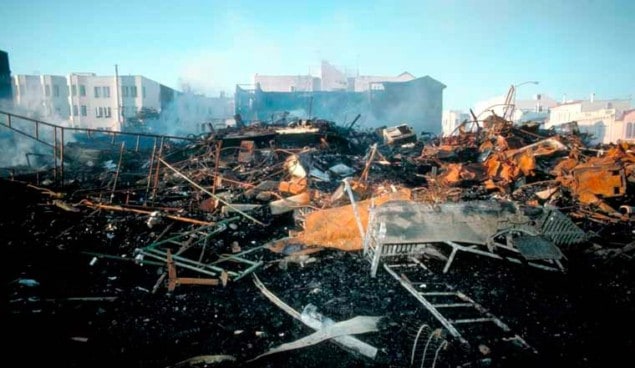
Recent events in Haiti and Chile remind us of the devastation that can be wrought by an earthquake, especially when it strikes without warning. For centuries, people living in seismically active regions have reported a number of strange occurrences immediately prior to a quake, including unexpected weather phenomena and even unusual behaviour among animals. In more recent times, some scientists have suggested other precursors, such as sporadic bursts of electromagnetic radiation from the fault zone. Unfortunately, none of these suggestions has led to a robust, scientific method for earthquake prediction.
Now, however, a group of physicists, led by physics Nobel laureate Georges Charpak, has developed a new detector that could measure one of the more testable earthquake precursors – the suggestion that radon gas is released from fault zones prior to earth slipping.
Spewing from the Earth’s guts
In the last decade, several studies have concluded that elevated concentrations of radon gas in soil or groundwater could be the sign of an imminent earthquake. It is believed that the radon is released from cavities and cracks as the Earth’s crust is strained prior to the sudden slip of an earthquake. In order to test this hypothesis, however, researchers would need to deploy several hundred detector devices along a fault zone. Although several commercial devices could, in theory, perform this task, these devices are too expensive for large-scale application. In addition, it is not clear whether many of these devices would still work in the presence of water.
Charpak’s alternative detector is based on established technology already in action in extreme conditions at laboratories such as CERN. It consists of a wire-type counter, which is the concept for which Charpak won his Nobel prize in 1992. In these devices, particles such as radon enter a gas-filled container and ionize some of the gas particles. The resulting ions and electrons are accelerated by a potential on the wire, causing a cascade of ionization that results in a current in the wire.
One key feature of this new detector design is that it works with ambient air, thus avoiding the need to keep refilling the detector’s ionization chamber with a particular gas. It also has a high efficiency, which was achieved by including multiple wires in the ionization chamber. In laboratory tests, the researchers report a radon count of 140 Bq.m–3 over one minute, which is comparable to that offered by commercial devices. The tests also show that the device still functions in 70% humidity, while single-wire detectors start to falter at just 30% (arXiv: 1002.4732v1).
Detecting success
“The instrument they propose is based on a very old and very well established detector technology,” says Ariella Cattai, a detector physicist at CERN. “What is very original with this work is the way they want to operate these detectors – in simple air and not in a complicated gas mixture like we normally use.”
Paulo Fonte, director of the Instrumentation Laboratory of Portugal (LIP), agrees that in using the ionization of air the researchers have “broken a taboo” in detection, and he does not foresee any major hurdles in developing this proto device into a commercially viable detector. “It detects alpha particles, which is all that is needed to detect heavy radioactive contaminants. I don’t know how well [this research] is funded, but even if the chances of succeeding are slim, the prize would be so important that it is for sure worth investigating.”
A member of Charpak’s team, Vladimir Peskov, who works at the National Autonomous University of Mexico, says that the group’s next step is to run more tests and develop a way of networking the detectors along a fault zone. They will also investigate ways of monitoring radon levels in groundwater.



